From the architects:
As part of the Victorian Government’s Level Crossing Removal Project, BKK Architects, Kyriacou Architects, Jacobs and ASPECT Studios have delivered two new railway stations, replacing existing ones at Lilydale and Mooroolbark. Lilydale is the terminus of its line; Mooroolbark is one stop away.
Lilydale is 40km from central Melbourne, a peri-urban township where the Yarra Valley meets the suburbs. Its original station dates from 1882. Historically, the railway split there, forking in one direction to Healesville (until 1980) and another to Warburton (until 1965). It was a tourist destination, its tearooms a delightful launching place for a Yarra Valley outing.
That tourism story faded when both lines were terminated at Lilydale, although the Warburton is now a popular walking/cycling trail.
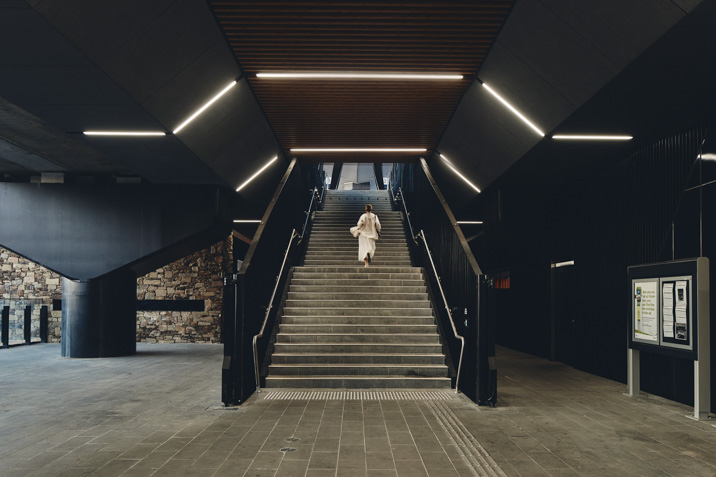
“The new station rekindles a sense of charm and excitement. It really celebrates Lilydale as the gateway to Warburton and the Yarra Valley food, wine and culture district,” says Simon Knott, Principal, BKK Architects.
Lilydale’s Maroondah Highway level crossing has been replaced by an elevated railway line and new station above the road. The new station has pedestrian entrances from both sides of the Maroondah Highway. The north-side entry includes bike access for travellers to the Warburton trail. Activity is focused on the street-level concourse, a covered space blurring the indoor/outdoor distinction with entrances and visual connections from many directions.
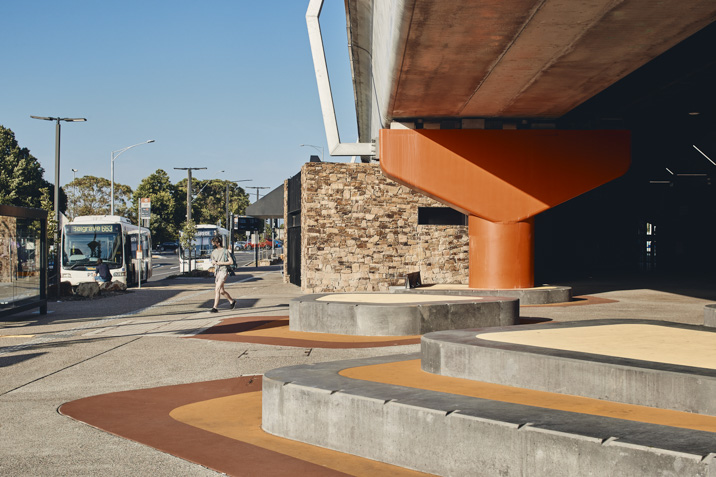
Lilydale township facilities are somewhat scattered and the station precinct (a hub for multiple transport modes) brings urban consolidation. While the old station is set back from Maroondah Highway, the new one has a street address and presence.
Mooroolbark’s new station is elevated above Manchester Road. It also has an indoor/outdoor concourse beneath the train line. It’s a station-focused civic heart that opens onto the sunny Brice Avenue piazza and shopping strip to the south and our new multi-deck carpark to the north.
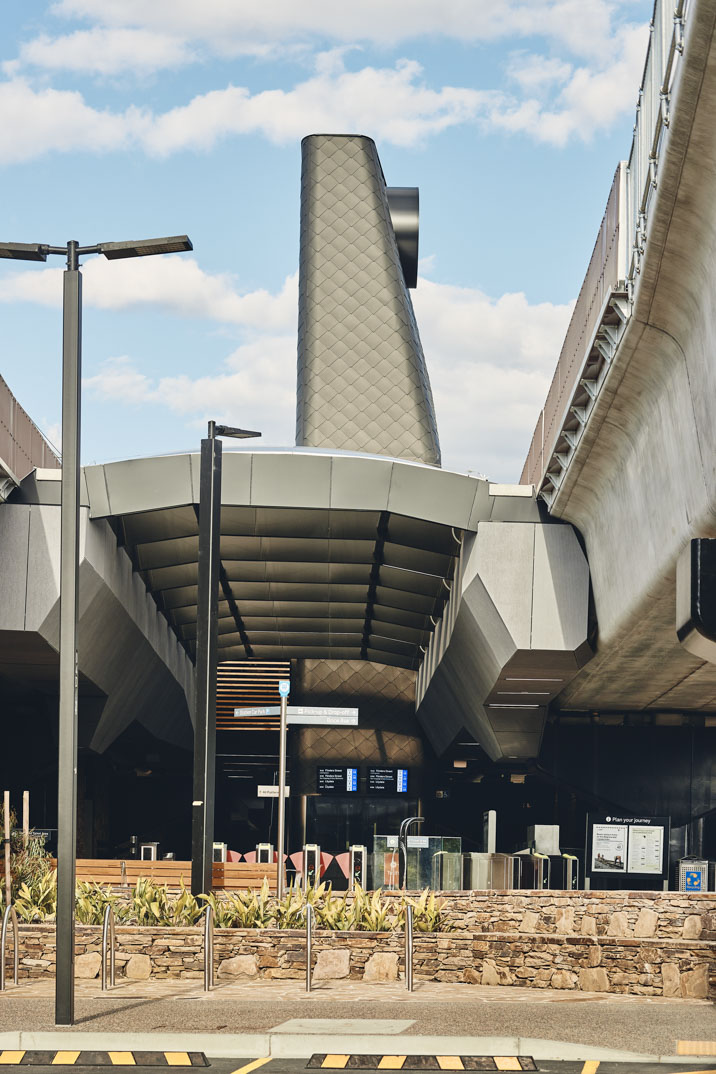
The carpark, a key project element, strengthens Mooroolbark as a transport hub. To soften its visual impact, the design team covered the façade with an array of green fins. We sampled an image from nearby Brushy Creek to get the selection of greens just right. It blends the multi- deck sensitively into its bushy community.
In a nod to the traditional Italian piazza, Mooroolbark’s clocktower is a wayfinding device and a constant point of reference throughout the area. Sibling stations Architecturally, the stations are siblings. They’re not assertive statements; their design instead distils the civic building to its essential, practical elements.
Both stations have distinctive tall lift shafts as urban markers. Both are clad in zinc and locally sourced Coldstream mudstone, popular in Yarra Valley buildings.
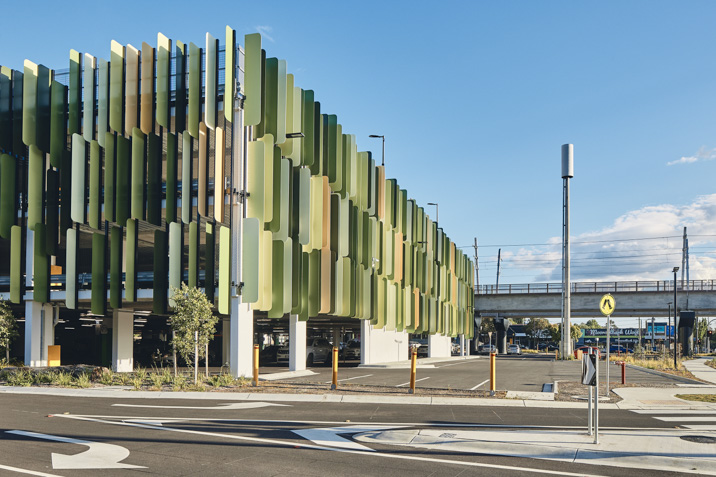
“These natural materials, worked by humans, are a deliberate counterpoint to the massive infrastructure of the viaducts and supports,” says Knott.
Lilydale station’s 27m lift shaft is a contemporary reimagining of the traditional station clocktower. But unlike Mooroolbark’s clock tower, it is topped with a new commission by Turkish-American artist Refik Anadol, an international leader in digital screen artworks. His work combines media, science and technology to communicate data in site-specific pieces.
Wind of Lilydale could exist nowhere else. It is an artistic interpretation of weather data collected in the area, which is processed through a custom algorithm into a unique and constantly changing pattern. BKK championed the lift shaft as a location for digital public art.
“With Wind of Lilydale, we worked closely with arts and culture consultants T Projects, and we made sure the architecture would foreground the art. It’s a new landmark visible for kilometres around,” Knott says.
The new Mooroolbark station replaces one established in 1887 and its quirky history is commemorated in a graphic on the glass bus-bay screens. It was a female-led station, first run by station mistress Elizabeth Meade until 1911 then by two Canadian women who installed Mooroolbark’s first public telephone.
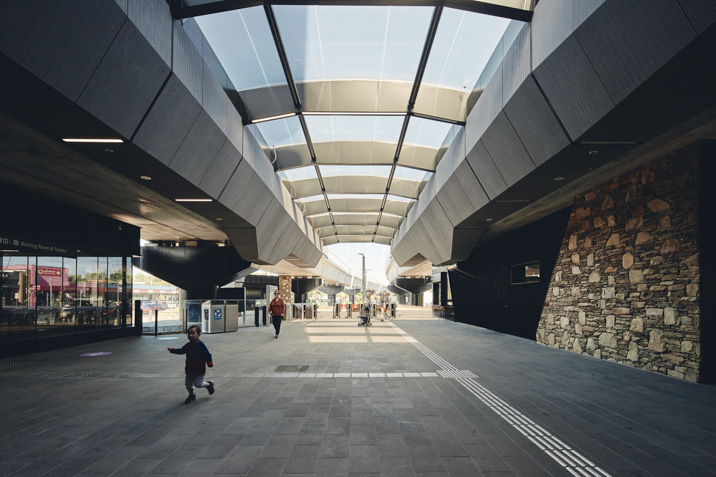
The local roads were unsealed, so city commuters trudged to the station in their gumboots, which they queued up along the platform ready for the muddy walk home.
Melbourne designer Jordan Rowe immersed himself in Mooroolbark’s stories to create the striking graphic. He has layered them with images of native flora and fauna (look for gum blossoms and cockatoos), and historic local photos. There’s Elizabeth in her station uniform, a table of fares and, of course, rows of gumboots.
Both stations have achieved a 5-Star design rating using the Green Star Railway Stations tool. Lilydale has solar panels on its canopy and roof, which can generate 38 percent of the station’s power needs. There’s a 15-kilolitre rainwater tank that can harvest over 60 percent of the station’s water and saves water through rainwater-sensitive urban design in the landscaping.
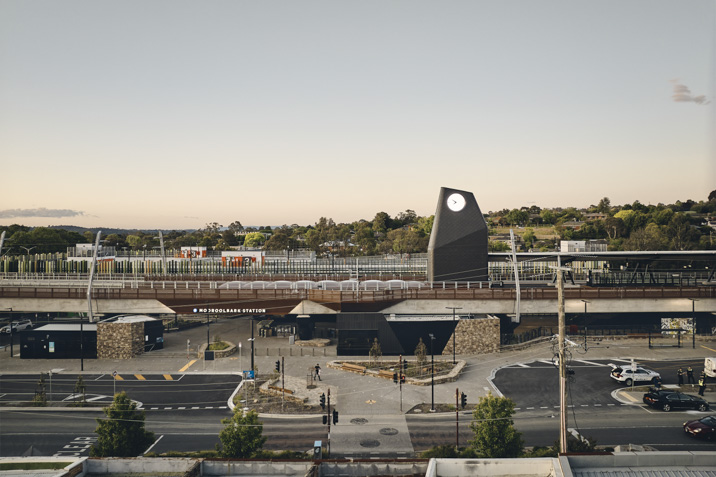
There’s a Parkiteer secure bike-parking cage plus better pedestrian and cycling connections, which encourage people to travel actively and sustainably to the station. The U-shaped bridge uses less material than alternative designs. The new public space has recycled asphalt in its pavement and the concrete structures are reinforced with recycled plastic instead of steel.

